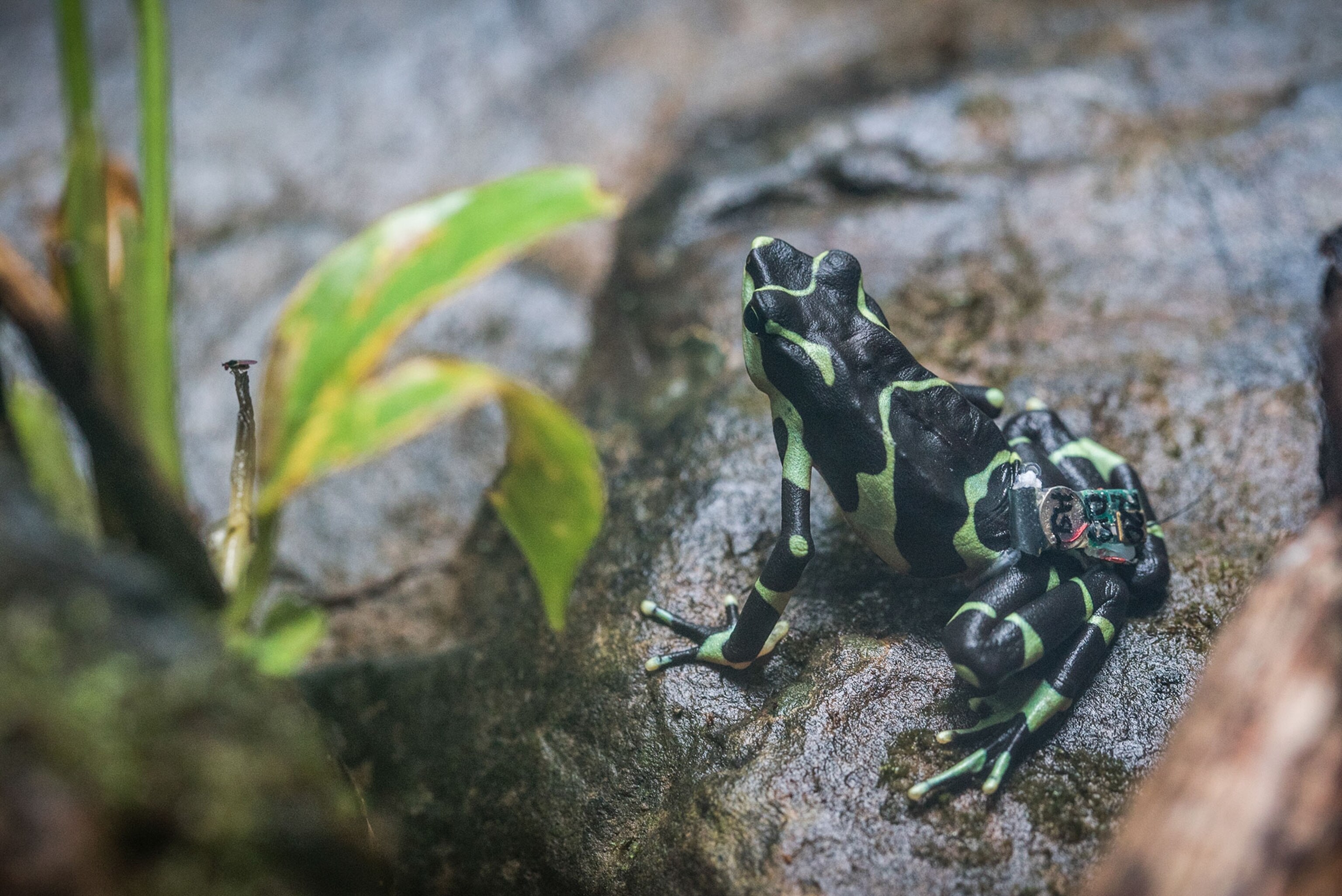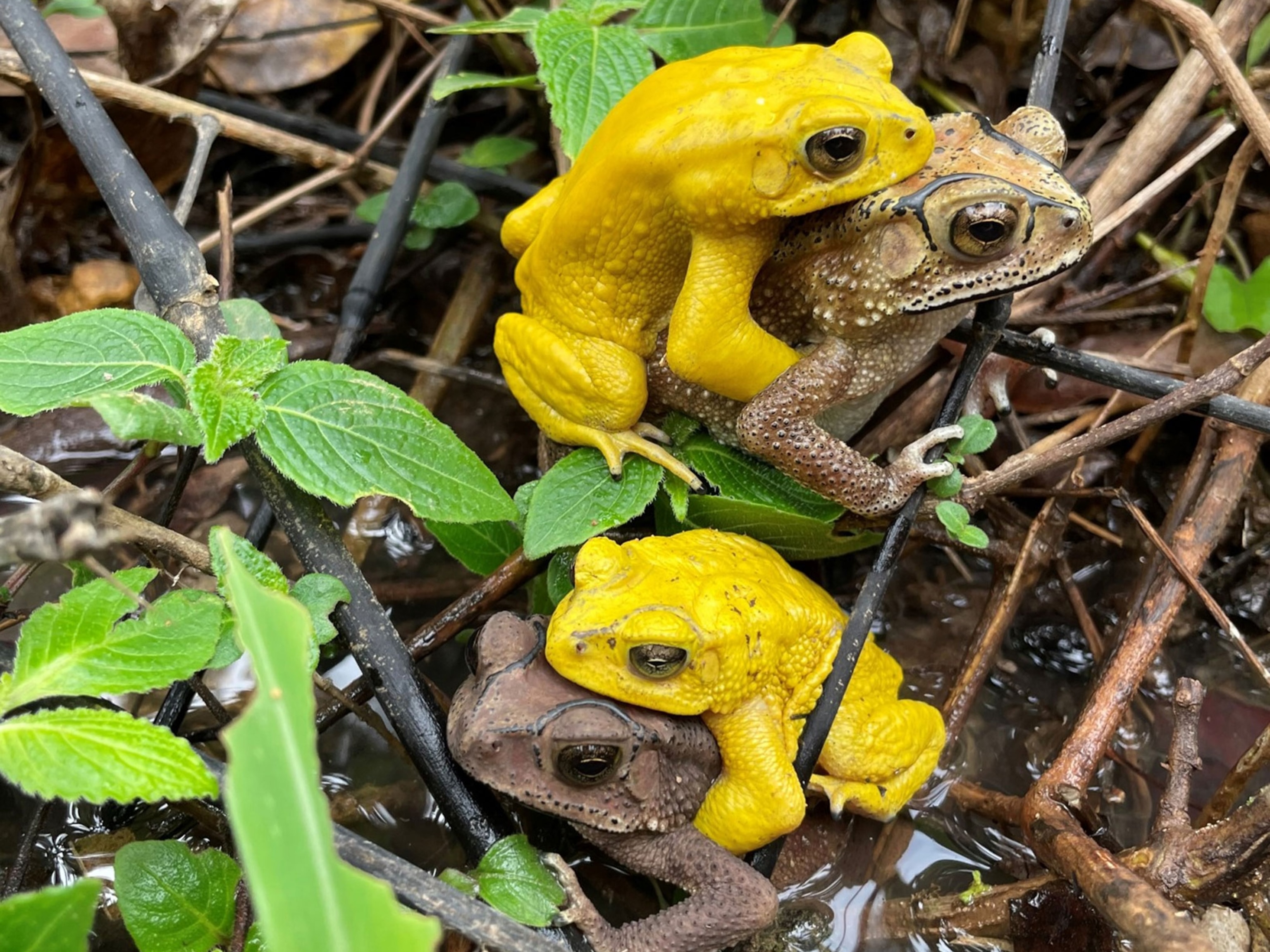Frogs Tote Tiny Radios to Save Their Species
Scientists recently released hundreds of harlequin frogs to learn more about a deadly fungus pushing the species to extinction.
Hundreds of colorful frogs, barely the size of a palm, have been released into the wilds of Panama in the hopes of reviving a critically endangered species.
The variable harlequin frogs, raised in captivity at a Smithsonian's Conservation Biology Institute facility in Panama are part of an experiment to see how the amphibians will fare in a country besieged by a pervasive and deadly disease. The population has declined by more than 80 percent over the last three generations, and in Panama, wild populations exist only in some protected areas.
The scientists gave 500 frogs a unique marking visible under UV light, while 30 additional frogs were released wearing miniature radio transmitters, says Brian Gratwicke, international coordinator for the Smithsonian's Panama Amphibian Rescue and Conservation project and a National Geographic Explorer.

Over the next few months, scientists will watch closely to see where the black-and-yellow splotched frogs go—and if they survive.
While the amphibians face some threats from habitat loss and the illegal trade, by far their biggest threat is chytrid fungus, which has destroyed many of Central America's frog populations.
How the Fungus Spread
Found throughout Panama since the 1990s, the fungus feeds on live vertebrates and causes a disease in amphibians called chytridiomycosis. Scientists believe it primarily affects frogs' skin, which is how they breathe and take in water. (See 13 Gorgeous Pictures Remind Us Why Frogs Need Our Help.")
In captivity, the disease can be treated with antifungal medication, but "it's been causing devastating effects for New World frog populations," says Gratwicke.
In Panama, the fungus caused a massive frog population die-off and is thought to be responsible for the extinction of the golden toad.
According to Gratwicke, scientists believe trade may have facilitated the spread of chytrid. It's thought to have originated in Mexico in the 1970s before it trickled south to Costa Rica in the 1980s. (Read about vanishing amphibians in National Geographic magazine.)

Jonathan Kolby, a National Geographic Explorer who studies how chytrid impacts frogs in Honduras, notes that the fungus occurs naturally, but during the mid 20th century, two different strains mutated.
"What seems to have forced that change is human activity. Two strains were brought together and created the global pathogenic strain," he says.
By the time scientists identified the strain it was too late for much of the infected regions. Once chytrid is introduced in an environment, it can't be removed without also harming frog populations.
Searching for Safe Havens
Gratwicke and his team hope that by tracking where the newly released frogs disperse, they can determine where amphibians are more susceptible to chytrid. The fungus is known to thrive in cold, moist environments. (Read "The Search for Missing Frogs Brings Some Species Back From the Dead.")
"The area where we're conducting the release is a lowland area, and there have been some hypotheses that perhaps if you release frogs in warmer areas, it might act as a climactic barrier" against the disease, says Gratwicke.
"If we do collect enough data," Gratwicke adds, "that would enable us to map refuges."
Kolby is less hopeful that such regions exist: "I'm not optimistic that there are clearly defined natural areas to evade chytrid."
Alternative Methods
Instead, he's looking at how scientists can manipulate environments to prevent chytrid from growing. Acidity, for example, is thought to slow down chytrid, and some aquatic environments can be made more or less acidic based on the level of vegetation.
In rare cases, some harlequin frogs have also shown resistance to chytrid, but experts don't yet know it the animals are adapting—or just lucky. (See "African Clawed Frog Spreads Deadly Amphibian Fungus.")





